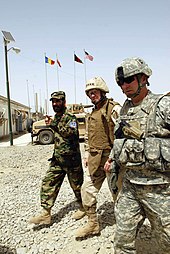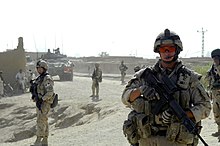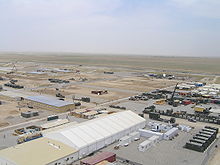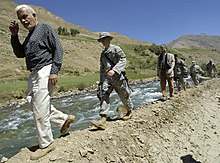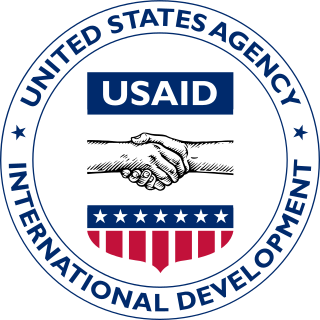
The United States Agency for International Development (USAID) is an independent agency of the U.S. federal government that is primarily responsible for administering civilian foreign aid and development assistance. With a budget of over $27 billion, USAID is one of the largest official aid agencies in the world and accounts for more than half of all U.S. foreign assistance—the highest in the world in absolute dollar terms.

The International Security Assistance Force (ISAF) was a multinational military mission in Afghanistan from 2001 to 2014. It was established by United Nations Security Council Resolution 1386 pursuant to the Bonn Agreement, which outlined the establishment of a permanent Afghan government following the U.S. invasion in October 2001. ISAF's primary goal was to train the Afghan National Security Forces (ANSF) and assist Afghanistan in rebuilding key government institutions; it gradually took part in the broader war in Afghanistan against the Taliban insurgency.

Civil-Military Co-operation (CIMIC) is the means by which a military commander connects with civilian agencies active in a theater of operations.

Kapisa is the smallest of Afghanistan's thirty-four provinces and is located in the north-east of the country. It has an estimated population of 496,840 people and an area of 1,842 km2 (711 sq mi), making it the most densely populated province apart after Kabul Province. It borders Panjshir Province to the north, Laghman Province to the east, Kabul Province to the south and Parwan Province to the west. Mahmud-i-Raqi is the provincial capital, while the most populous city and district of Kapisa is Nijrab.
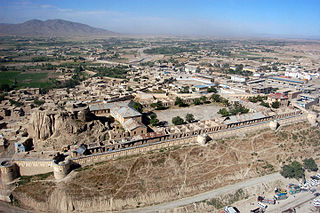
Paktia is one of the 34 provinces of Afghanistan, located in the east of the country. Forming part of the larger Loya Paktia region, Paktia Province is divided into 15 districts and has a population of roughly 623,000, which is mostly a tribal society living in rural areas. Pashtuns make up the majority of the population and a small percentage include Tajiks Gardez is the provincial capital. The traditional food in Paktia is known as (dandakai) which is made from rice and mung bean or green gram.
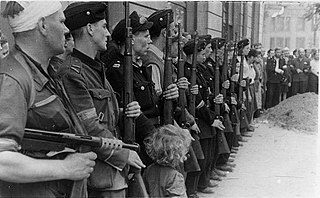
An insurgency is a violent, armed rebellion by small, lightly armed bands who practice guerrilla warfare from primarily rural base areas against a larger authority. The key descriptive feature of insurgency is its asymmetric nature: small irregular forces face a large, well-equipped, regular military force state adversary. Due to this asymmetry, insurgents avoid large-scale direct battles, opting instead to blend in with the civilian population where they gradually expand territorial control and military forces. Insurgency frequently hinges on control of and collaboration with local populations.
Investment in post-2003 Iraq refers to international efforts to rebuild the infrastructure of Iraq since the Iraq War in 2003. Along with the economic reform of Iraq, international projects have been implemented to repair and upgrade Iraqi water and sewage treatment plants, electricity production, hospitals, schools, housing, and transportation systems. Much of the work has been funded by the Iraq Relief and Reconstruction Fund, and the Coalition Provisional Authority.

Andrew S. Natsios is an American public servant and Republican politician from Massachusetts, who served in a number of positions in the administrations of Governor Paul Cellucci and President of the United States George W. Bush.

Counterinsurgency is "the totality of actions aimed at defeating irregular forces". The Oxford English Dictionary defines counterinsurgency as any "military or political action taken against the activities of guerrillas or revolutionaries" and can be considered war by a state against a non-state adversary. Insurgency and counterinsurgency campaigns have been waged since ancient history. However, modern thinking on counterinsurgency was developed during decolonization. Within the military sciences, counterinsurgency is one of the main operational approaches of irregular warfare.
The Iceland Crisis Response Unit is an Icelandic para-military unit with a capacity roster of up to 200 people, of whom about 30 are active at any given time. It is operated by the Icelandic Ministry of Foreign Affairs. It is primarily designated for peacekeeping operations and was established in the 1990s to participate in operations and peacekeeping projects, including in support of NATO peacekeeping operations. That role later evolved into providing an appropriate forum for deploying personnel within other organizations such as with OSCE field missions as well as with UN DPKO, and organizations such as UNIFEM, UNRWA and UNICEF.
Reconstruction in Afghanistan refers to the efforts to improve Afghanistan's governance as well as physical buildings and infrastructure following the overthrow of the First Islamic Emirate of Afghanistan by the United States. These efforts involved various groups including supranational organizations, the Afghan government, the US government and other foreign governments, and civilians. These efforts also include training civil administrators, improving essential services and public safety, supporting civil society and self-determination, and promoting the rule of law and economic development.

411th Civil Affairs Battalion (Tactical) is a civil affairs (CA) unit of the United States Army. It is based at Danbury, Connecticut. The unit includes Alpha, Bravo, Charlie, Delta and Headquarters (HHC) Companies, all located in Danbury. The battalion has been involved in almost every conflict or major operation since Operation Just Cause in Panama in 1989, most recently serving in the Horn of Africa from 2016 to 2017.

Foreign internal defense (FID) is a term used by militaries in several countries, including the United States, France, and the United Kingdom, to describe an integrated, and possibly multi-country, approach to combating actual or threatened insurgency in a foreign state. This foreign state is known as the Host Nation (HN) under the US doctrine. The term counter-insurgency is more commonly used worldwide than FID.
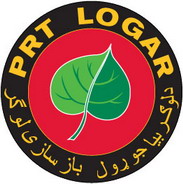
Provincial Reconstruction Team Logar was a Provincial Reconstruction Team that was part of the International Security Assistance Force - an international military force in Afghanistan. PRT Logar was subordinated to ISAF Regional Command East, responsible for the eastern provinces of Afghanistan. Regional Command East with its HQ in Bagram was a U.S.-run Operational Command containing units from several other NATO and non-NATO countries. The task of PRT Logar was to help the Afghan government rebuild and further develop Logar province.
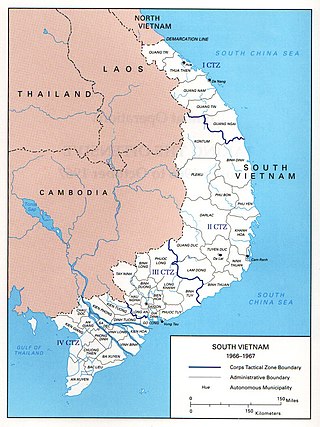
CORDS was a pacification program of the governments of South Vietnam and the United States during the Vietnam War. The program was created on 9 May 1967, and included military and civilian components of both governments. The objective of CORDS was to gain support for the government of South Vietnam from its rural population which was largely under the influence or controlled by the insurgent communist forces of the Viet Cong (VC) and the North Vietnamese People's Army of Vietnam (PAVN).

The Helmand Provincial Reconstruction Team (HPRT) was established in September 2004. It was led by the US until 1 May 2006, when this responsibility was handed to the UK. HPRT ceased operations in Lashkar Gah on 27 December 2013.

The Provincial Reconstruction Team in Meymaneh was an International Security Assistance Force (ISAF) command; it existed between 2004 and 2012. It was classified by NATO, as a "Provincial Reconstruction Team". It consisted of soldiers and civilians from Norway, Latvia, Macedonia, Iceland and the United States. It conducts joint operations with Afghan Security Forces in Faryab province. It is led by ISAF and began its work in 2004 when they took over from the British. The camp was moved out of the city due to several attacks and a lack of space, in 2006. It is co-located with the airstrip, north of Meymaneh. Several "FOBs" are located in Ghormach and Qeysar districts, which the PRT share with Afghan soldiers.
Commander's Emergency Response Program (CERP) was money for military commanders to use for conducting rebuilding and reconstruction during the Iraq and Afghanistan Wars.

Provincial Reconstruction Team Zabul was a civil-military unit tasked to assist the government of the Islamic Republic of Afghanistan deliver government and security in the southern province of Zabul. Along with the military component, the PRT also includes civilians from the Dept. of State, USAID and Dept. of Agriculture. The team had approximately 100 personnel. The commander for PRT Zabul was an Air Force Lieutenant Colonel, but shared mission planning with the Dept. of State senior official in the province. The team was composed of half Army Soldiers and half Air Force Airmen. Soldiers served as the security force, civil affairs teams and other staff positions like Director of Operations and Logistics Officer. Airmen on the team served in multiple capacities including command post, engineering, intelligence, public affairs/information operations, services, vehicle maintenance, logistics, personnel, perimeter security advisors and personal security detail.

The Sardeh Band Dam is located near Sardeh Band town, in the eastern part of Andar District of Ghazni Province of Afghanistan. It was constructed in 1967 by the Soviet Union and Afghanistan during the reign of Mohammed Zahir Shah prior to the Soviet–Afghan War. The dam provided irrigation water for more than 67,000 jeribs of land after completion. Currently only 2,000 jeribs of land is under cultivation. Maximum capacity of the reservoir is 259 million cubic meters of water, and the reservoir holds about 164 million gallons at present.

